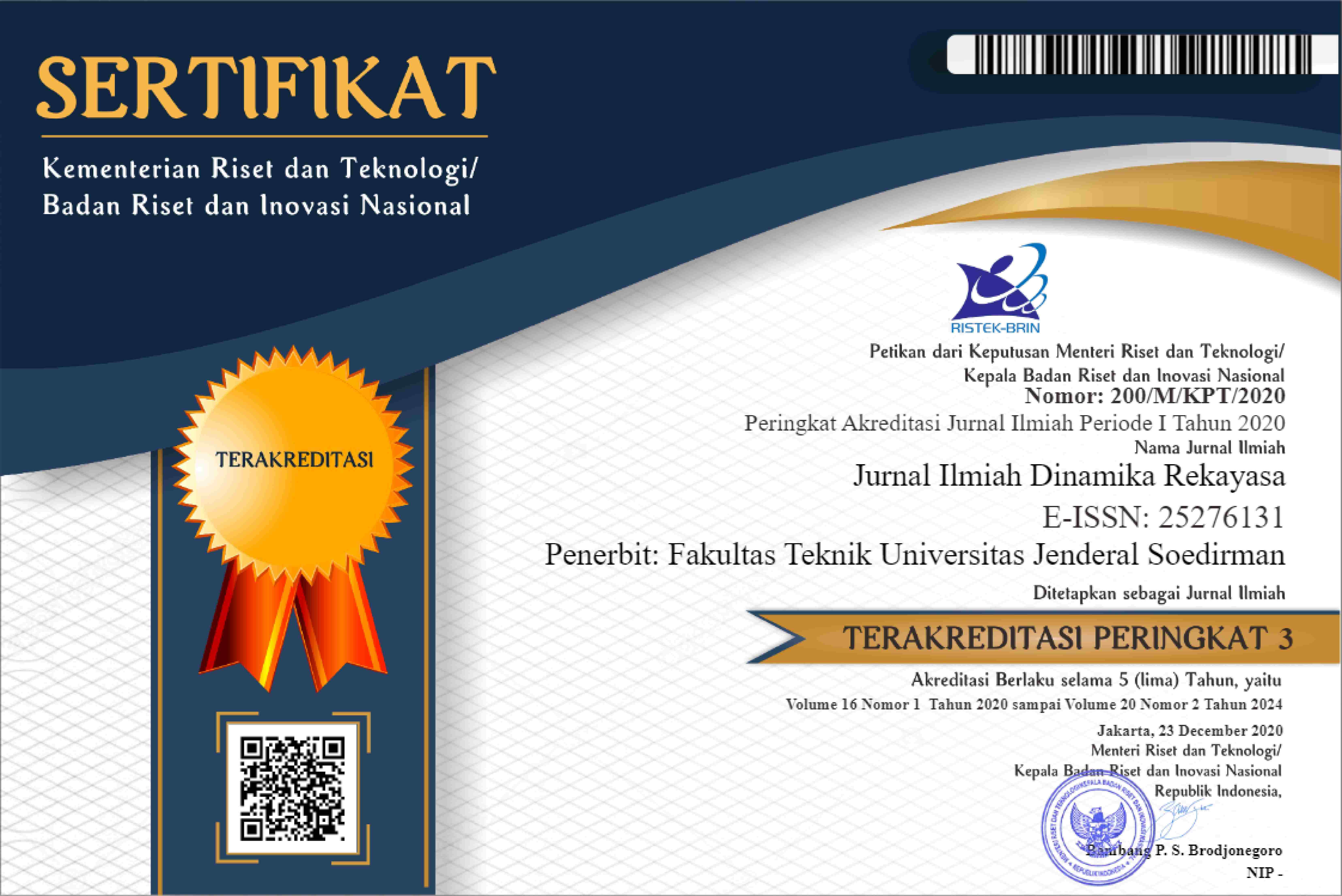Supply Chain Risk Analysis In Rattan Woven Exporting Company Using House Of Risk And Analytic Network Process
DOI:
https://doi.org/10.20884/1.dinarek.2025.21.1.110Keywords:
ANP, HOR, SCOR, risk management, supply chainAbstract
A rattan furniture manufacturing and exporting company faces challenges in its supply chain, especially related to the scarcity of raw materials that hampers the production process. This study aims to identify risks that affect the supply chain of rattan products and exports using indicators from the SCOR model. In addition, this study also aims to design and determine the priority of supply chain risk mitigation strategies, by integrating the House of Risk (HOR) and Analytic Network Process (ANP) methods. The SCOR model is used to identify risks by grouping activities based on five main supply chain processes: plan, source, make, deliver, and return. After that, an assessment is carried out on each risk event, risk cause, and priority risk that has a major impact on the supply chain, using the HOR Phase 1 method. Furthermore, risk mitigation actions are designed using the HOR Phase 2 method, and priority risk mitigation actions are determined based on company criteria, using the ANP method. The results of risk identification show 29 risk events and 30 risk causes. As a solution, 6 risk mitigation actions are designed to overcome these supply chain problems. From the research results, the priority risk mitigation actions recommended to be implemented first by the company are to carry out planning and control of raw material availability.
Downloads
References
B. R. Edward, M. A. Savitri, D. Morika, I. Gabriella, and P. Studi, “Pengaplikasian modul ‘ATUMICS’ pada bidang desain industri furnitur rotan di Cirebon,” Pengetah. dan Peranc. Produk), vol. 5, no. 1, pp. 25–36, 2022.
N. Fauzan, “Strategi Pengembangan Usaha Furniture Roran (Studi Kasus : Ukm Rotan Desa Trangsan ),” Universitas Muhammadiyah Surakarta, 2021.
M. F. Anwar, “Analisis Daya Saing Furniture Rotan Indonesia Ke Negara Tujuan Inggris Dan Italia,” 2021. doi: 10.32585/ags.v5i1.1616.
M. F. Anwar, H. Harianto, and S. Suharno, “Dinamika Daya Saing Ekspor Furniture Rotan Indonesia ke Negara Tujuan Eropa,” J. Agribisnis Indones., vol. 8, no. 2, pp. 152–163, Dec. 2020, doi: 10.29244/jai.2020.8.2.152-163.
N. N. Dewi and I. K. Isharina, “Analisis Daya Saing dan Strategi Industri Furnitur Rotan Indonesia di Perdagangan Internasional,” J. Manag. Risiko dan Keuang., vol. 01, no. 2, pp. 97–105, 2022, doi: https://dx.doi.org/10.21776/jmrk.2022.01.2.03.
Kemenperin, “Ringkasan Eksekutif Perkembangan Ekspor dan Impor Industri Pengolahan Non Migas Bulan Februari 2023,” 2023.
G. Baryannis, S. Validi, S. Dani, and G. Antoniou, “Supply chain risk management and artificial intelligence: state of the art and future research directions,” Int. J. Prod. Res., vol. 57, no. 7, pp. 2179–2202, 2019, doi: 10.1080/00207543.2018.1530476.
Y. Fan and M. Stevenson, “A review of supply chain risk management: definition, theory, and research agenda,” Int. J. Phys. Distrib. Logist. Manag., vol. 48, no. 3, pp. 205–230, 2018, doi: 10.1108/IJPDLM-01-2017-0043.
M. F. A. Maulana, “Analisis Manajemen Risiko pada Aktivitas Supply Chain dengan Pendekatan Supply Chain Risk Management,” Universitas Islam Indonesia, 2020.
Sartono, H. M. Mulki, and W. Azlia, “Analisis dan Perumusan Strategi Mitigasi Risiko Rantai Pasok Perusahaan Pakaian Rajut,” Universitas Brawijaya, 2021.
R. Sukwadi and A. Caesar, “An integrated approach for supply chain risk management,” Eng. Manag. Prod. Serv., vol. 14, no. 1, pp. 38–48, 2022, doi: 10.2478/emj-2022-0004.
W. N. Tanjung, S. A. Atikah, S. Hidayat, E. Ripmiatin, S. S. Asti, and R. S. Khodijah, “Risk Management Analysis Using FMECA and ANP Methods in the Supply Chain of Wooden Toy Industry,” IOP Conf. Ser. Mater. Sci. Eng., vol. 528, no. 1, 2019, doi: 10.1088/1757-899X/528/1/012007.
I. N. Pujawan and L. H. Geraldin, “House of risk: A model for proactive supply chain risk management,” Bus. Process Manag. J., vol. 15, no. 6, pp. 953–967, 2009, doi: 10.1108/14637150911003801.
R. Magdalena, “ANALISIS RISIKO SUPPLY CHAIN DENGAN MODEL HOUSE OF RISK (HOR) PADA PT TATALOGAM LESTARI,” 2019.
D. Kasoni, “PERBANDINGAN KRITERIA METODE AHP DAN ANP UNTUK MENENTUKAN PEMBELIAN MOBIL LOW COST GREEN CAR (LCGC),” J. Tek. Inform., vol. 2, no. 1 SE-, pp. 1–10, Sep. 2016, doi: 10.51998/jti.v2i1.1.
M. R. A. Kaluku and N. Pakaya, “PENERAPAN PERBANDINGAN METODE AHP-TOPSIS DAN ANP-TOPSIS MENGUKUR KINERJA SUMBER DAYA MANUSIA DI GORONTALO,” Ilk. J. Ilm., vol. 9, no. 2, 2017, doi: 10.33096/ilkom.v9i2.121.124-131.
M. Abdillah, I. Ilhamsyah, and R. Hidayati, “Penerapan Metode Analytic Network Process (ANP) Berbasis Android Sebagai Sistem Pendukung Keputusan Dalam Pemilihan Tempat Kos,” Maha Abdillah, Ilhamsyah, Rahmi Hidayati, vol. 6, no. 3, 2018.





